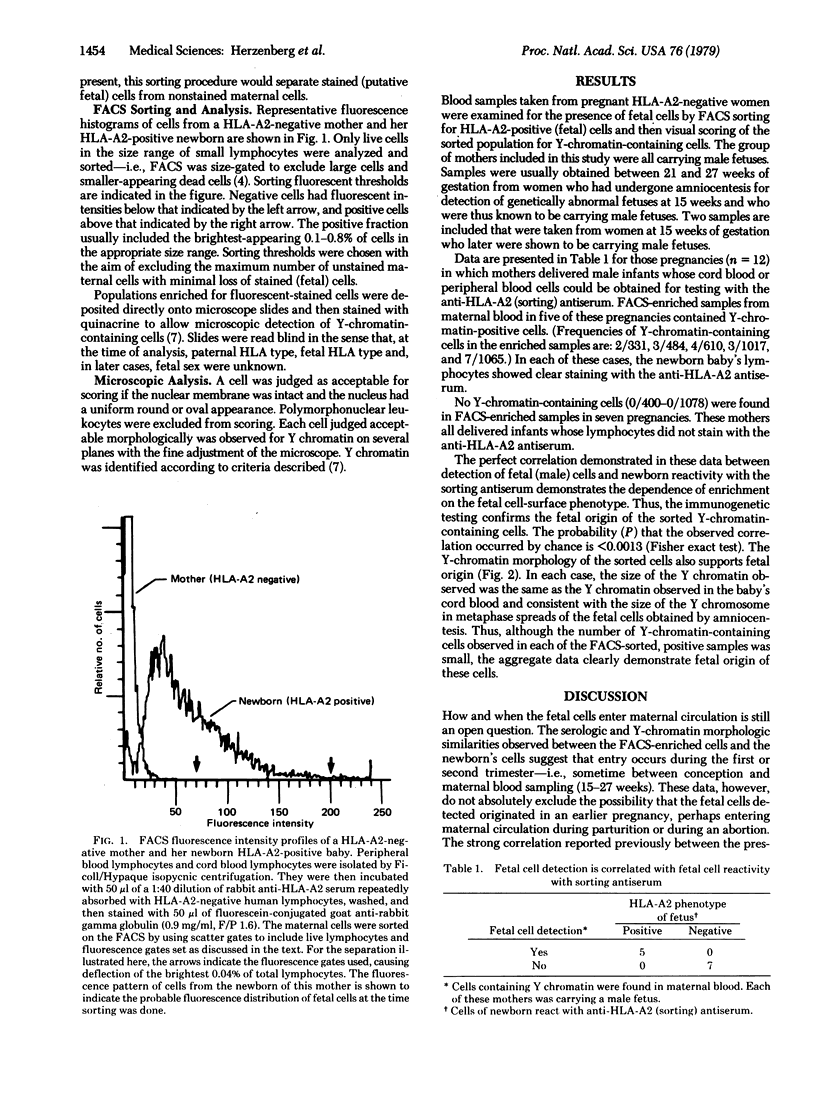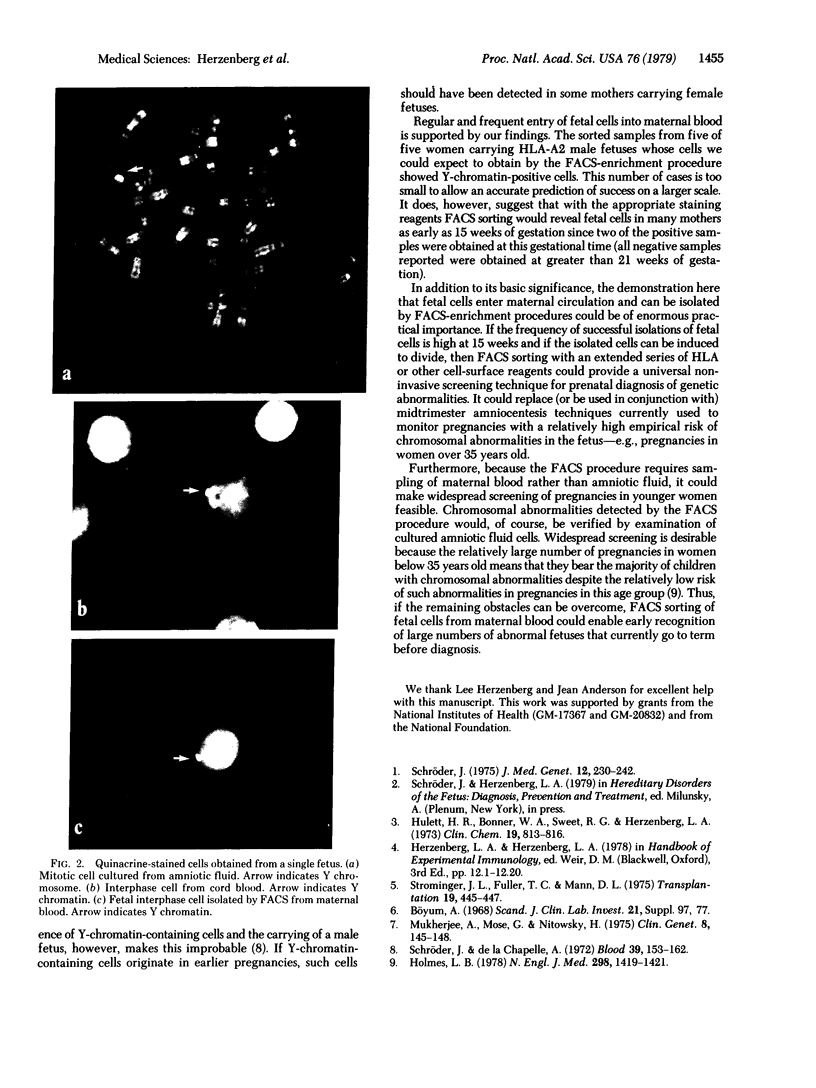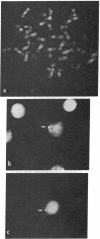Abstract
Fetal cells, potentially usable for prenatal diagnosis, were sorted from maternal blood samples taken as early as 15 weeks of gestation. Immunogenetic and cytogenic criteria established the fetal origin of the observed cells: Y-chromatin-containing (male) cells were detected in the sorted sample if and only if the newborn proved to be male and carried cell-surface antigens detected by the fluorescent-labeled antibody used for sorting with the fluorescence-activated cell sorter.
Full text
PDF


Images in this article
Selected References
These references are in PubMed. This may not be the complete list of references from this article.
- Holmes L. B. Genetic counseling for the older pregnant woman: new data and questions. N Engl J Med. 1978 Jun 22;298(25):1419–1421. doi: 10.1056/NEJM197806222982511. [DOI] [PubMed] [Google Scholar]
- Hulett H. R., Bonner W. A., Sweet R. G., Herzenberg L. A. Development and application of a rapid cell sorter. Clin Chem. 1973 Aug;19(8):813–816. [PubMed] [Google Scholar]
- Korf B. R., Schuh B. E., Salwen M. J. Optimum pH for nuclear sex identification using quinacrine. Clin Genet. 1975 Aug;8(2):145–148. doi: 10.1111/j.1399-0004.1975.tb04402.x. [DOI] [PubMed] [Google Scholar]
- Robb R. J., Humphreys R. E., Strominger J. L. Rabbit anti-HL-A2 sera. Transplantation. 1975 May;19(5):445–447. [PubMed] [Google Scholar]
- Schröder J., De la Chapelle A. Fetal lymphocytes in the maternal blood. Blood. 1972 Feb;39(2):153–162. [PubMed] [Google Scholar]
- Schröder J. Transplacental passage of blood cells. J Med Genet. 1975 Sep;12(3):230–242. [PMC free article] [PubMed] [Google Scholar]



